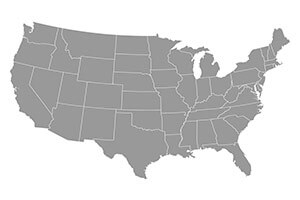
Winter has been a mixed bag, warmer than usual in most places and cooler in some, with most precipitation arriving in liquid form. Not so mixed are the retail markets, which have been strong throughout the country since last spring. Wholesale prices continue to be hurt in many places by cheap imports of questionable “honey,” but small markets and direct consumers can’t seem to get enough of local honey.
Northeast
In Pennsylvania, demand has increased for “value-added” products, such as lip balms, lotions and soaps, and gift baskets containing these items, along with local honey. Good rainfall in early winter bodes well for spring.
A New York beekeeper markets personalized packaging for teacher gifts and special occasions. Local retail demand continues strong.
New Hampshire is very much a small-producer state, and hobbyists are experiencing high demand for their honey. Winter was a bit warmer than normal through late January, but still cool enough to prevent early brood-rearing.
Maine’s honey stocks are low due to a dry 2020. Customers seem to prefer honey in glass jars, for which beekeepers can charge a higher price. Nucs provide a better start than packages, which are slow to get going in this northern climate.
Mideast
Inventories are also low in Virginia due to high retail demand. Winter weather was tolerable through January, and ground moisture is good.
Eastern Kentucky beekeepers have seen no tulip poplar crop in four years due to sassafras beetle damage. With the current mild winter (too warm to kill the weevils), that trend will likely continue. Early spring feeding will be necessary as well, as more active bees are eating more stores.
In Tennessee, retail sales are good, but the wholesale market is suffering from Chinese imports.
Southeast
A warm, dry December in Alabama meant that most colonies did not go broodless, with foragers having continued access to pollen.
The Gulf Coast of Florida has seen plenty of rain, and good cool temps to make trees go dormant. Willows were beginning to bloom in late January.
A Georgia beekeeper laments the continued low import prices, asking, “Who is letting that foreign honey in at low cost? … I will never get that $.25 to $.50 [per pound] back.”
Southwest
Louisiana was normal to “a little warm” into January. Demand for local honey continued strong.
Temperatures were above normal through most of Texas, with below average precipitation. Local honey continues to move briskly here, too.
Ditto for New Mexico, where stocks are running low due to high demand at both retail and wholesale outlets.
Arizona temperatures have been slightly below normal. Drought conditions continue throughout most of the state, and the main nectar crop in December was desert plant bloom.
East Central
Wisconsin beekeepers have no shortage of retail customers, including Chicagoans who have fled to their Wisconsin cabins to ride out the pandemic, and are seeking solace by snapping up local honey. Weather in the central and western parts of the state has been mild, and some colonies sent to almonds were lower-than-optimum strength due to mites taking advantage of brood-rearing into late October.


